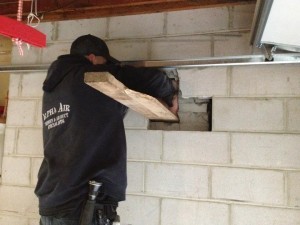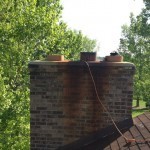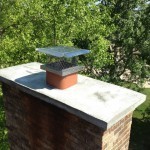You might not know too much about the chimney that vents smoke and other byproducts away from your home. Many people don’t know that the masonry they see on the outside of a chimney is not the complete picture. A safe, modern chimney also has a liner inside, which helps to contain byproducts of combustion properly.
2nd Generation Chimneys, Inc. Blog: Archive for the ‘Chimney Liner’ Category
3 Things to Know about Your Chimney Liner
Wednesday, July 6th, 2016Should You Upgrade Your Chimney Liner?
Monday, September 21st, 2015Unless you’re a professional chimney sweep, it can be tough to tell if your chimney is in trouble. Chimneys don’t exactly make noise or show many other outward signs that they need repair. However, there are some ways to determine if you should replace your older chimney liner with a new one. Here is how you can tell that your chimney need relining services from a professional chimney technician.
Relining a Chimney: A Safe Bet for Many Homes
Monday, August 24th, 2015Modern safety standards regulate chimneys in many ways, such as the inclusion of the chimney liner in any home. Masonry chimneys were once built without anything lining the inside. While the bricks and mortar used in their construction often held up for several decades, eventual wear and tear made it so that chimneys were at an extremely high risk of catching fire. Beginning in the 1940s, building regulations began to include the mandated addition of a chimney liner in any new construction.
What Are the Benefits of a Chimney Liner?
Friday, June 20th, 2014Since the inside of your chimney isn’t something you see often, you may not be aware of how essential the chimney liner is to keeping your fireplace hearth both safe and pleasant. The liner is responsible for helping combustion material from the fires in the hearth escape up the chimney and prevent the development of dangerous residue such as creosote.
Not all chimneys have liners; if you live in an older home, the chimney may have originally been constructed without a liner. If this is the case for your home, you should definitely contact 2nd Generation Chimneys, Inc. and have us help you choose and install a chimney liner in Maplewood, MN. If your chimney has a damaged liner, you should also contact us for a replacement.
2nd Generation Chimneys, Inc. is one of the most trustworthy sources for chimney repair services, and have upheld our standard for quality through two generations.
Chimney liner benefits
- Protects your home from fire damage: One of the essential functions of a chimney liner is to keep the heat inside the chimney from reaching the combustible material outside it. For older chimneys with cracks in their masonry, it’s easy for heat to escape to areas such as the second floor or the roof and start a conflagration. In fact, the majority of house fires in the U.S. start this way. A liner keeps the heat inside the chimney where it belongs.
- Prevents creosote and moisture: Creosote is the #1 enemy of chimneys everywhere. This shiny black substance is the unburned wood energy that gathers due to poor venting or wood that doesn’t burn thoroughly. It is highly combustible and a leading cause of chimney fires. A liner prevents creosote from building up by helping with proper venting. The liner also stops water moisture from becoming trapped in the chimney, which is a significant danger because it will cause cracking when it freezes during winter.
- Increases a home’s energy efficiency: Liners form a layer of insulation inside a chimney that reduces the downdrafts that can come down it during times when there is no fire in the hearth. This means less cold air getting into your home and forcing you to run your heater more often. It also means more efficient burning of fuel inside the fireplace.
Chimney liners are usually made of clay or stainless steel. Both have advantages and disadvantages; your re-lining professionals will determine which one will work best for your chimney.
If you have any doubts about the integrity of your chimney liner or any other part of your fireplace, contact 2nd Generation Chimneys, Inc. and we will perform a CSIA-approved inspection. Based on our findings, we’ll recommend how best to proceed with making your chimney as safe as possible, whether through restoration, repair, or a new chimney liner in Maplewood, MN.
How Is Minneapolis Chimney Relining Done?
Thursday, May 23rd, 2013Here in Minnesota you likely use your chimney a lot. All that use can eventually cause problems for your chimney. One of the fastest and easiest ways to both repair cracks and also increase the efficiency of your chimney is to get it relined. Here at 2nd Generation Chimneys we have many years of experience relining all different types of chimneys. We often get asked about how the process actually gets done. We thought it would be a good idea to put together a quick explanation of how our experts perform Minneapolis chimney relining. Give us a call if you’re having any issues with your chimney.
Minneapolis Chimney Relining
There are a couple different methods for relining your chimney. The Minneapolis chimney relining experts at 2nd Generation Chimneys can work with you to figure out which method would be best. The fuel that you use for your fireplace will be a large determining factor in which type of chimney relining material we will use.
- Clay tiles – Clay tiles are inexpensive and very common. They can be found almost anywhere and are a good option for many homeowners. The Minneapolis chimney relining professionals at 2nd Generation can help determine if this is the right route for your home.
- Metal – Metal relining is another very common chimney relining material. Stainless steel is a good choice for some homeowners because it can be used with many different types of fireplaces.
- Cast-in-place – This type of relining involves pouring cements into a mold inside your chimney. The mold forms the cement into a solid cylinder inside of your existing chimney. This is a great option if your chimney is damaged.
If you’ve started to have problems with your chimney just call the friendly Minneapolis chimney relining specialists at 2nd Generation Chimney. We have years of experience working with all different types of chimneys. We’ll be able to get yours back up and working again soon.
Chimney Relining Experts At Work!
Friday, November 9th, 2012Our crew at 2nd Generation Chimneys is trained to detect and protect your family from fire hazards in your chimney, such as replacing  your chimney lining. Non-combustible material is used in the liners we install to protect your home from combustible gas and smoke that can damage or start fires in your chimney. Give us a call today to find out how we can restore your chimney to safe working order with a new liner or other repair. We are here to serve you in St. Paul and the entire Twin Cities area!
your chimney lining. Non-combustible material is used in the liners we install to protect your home from combustible gas and smoke that can damage or start fires in your chimney. Give us a call today to find out how we can restore your chimney to safe working order with a new liner or other repair. We are here to serve you in St. Paul and the entire Twin Cities area!
Chimney Reline in Minneapolis
Wednesday, July 18th, 2012When it comes to quality Chimney Relining, the Pixley family name has been around for generations and remains the name to trust for all your Chimney cleaning, repair, and inspection needs. David Pixley, owner of 2nd Generation Chimneys, Inc. will ensure the highest quality craftsmanship on your Chimney Relining job. Give us a call today and let the Pixley’s take care of your Chimney needs! See the difference in quality here:
Why St. Croix County Residents Should Inspect or Replace a Flue Liner When Upgrading a Heating System
Wednesday, March 28th, 2012Despite how they look, most chimneys in St. Croix County can not of handle all forms of exhaust. In fact, when you get your chimney serviced, it is vital to perform chimney flue liner cleaning, and if the chimney flue does not look capable of handling a few more winters, replace it. Here are some details on why this is so important and how you can ensure your family and home are safe with your current chimney.
Condensation and Flue Gasses
If your chimney liner is older and has not been updated in some time, then it is likely not optimized for high efficiency gas boiler or furnaces. Chimneys are designed to do one thing – vent flue gasses. However, since heating systems have become so much more efficient in recent years, they now release flue gasses at much lower temperatures as more heat is extracted from the exhaust.
The result is that gasses being released into your chimney or exhaust pipes are often just barely over the dew point, meaning they will cool in the chimney and condense into liquid – often containing dangerous, corrosive acids that can eat through the flue liner and start to leak through the external structure.
In a single hour of operation, a 150,000 BTU furnace can produce over a gallon of liquid lined with various acids that can eat right through your flue liner and cause damage to your house and present health problems to your family.
Proper Inspection and Upgrade
Not only can an increase in efficiency cause problems, but changing the type of exhaust can as well. Switching from gas to oil for example results in different exhaust and can create a problem with older flue liners.
For all of these reasons it is very important to have your current flue liner inspected for damage and to make sure it is sufficient for a new heating system. If it is not, it should be replaced immediately to ensure it will be enough to handle the gasses being released during combustion. Please call 2nd Generation Chimneys with any questions.


